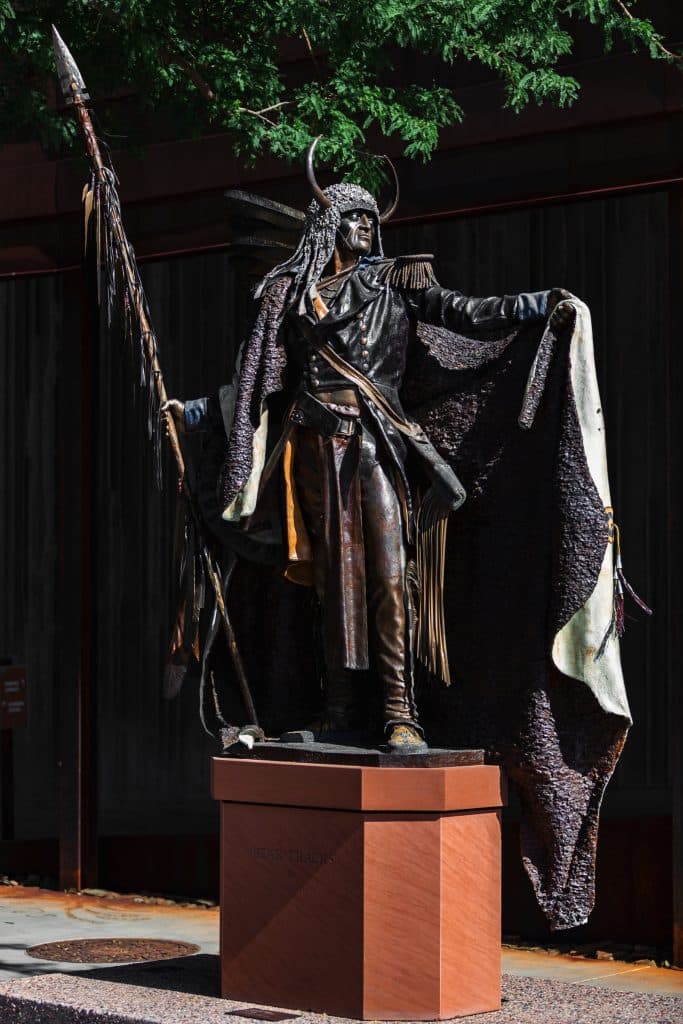Denmark has a long history.
Prehistoric remains attest to the human presence in Denmark for around 10,000 years (camp of reindeer hunters). On the Danish coast have been unearthed the remains of a civilization of fishermen. The Bronze Age (around the middle of the 2nd millennium-second half of the 1st millennium BC) saw the blossoming of a very elaborate culture, known in particular from the tombs of Jylland and whose objects of art (Trundholm solar tank, for example) that have come down to us allow us to appreciate its refinement. The territory of Denmark is also rich in megalithic monuments. The Iron Age is marked by the influence of Celtic culture.
Populated by Germanic tribes (Jutes, Angles, Cimbres) who participated in the barbarian invasions of the 2nd-5th centuries, Denmark truly entered history with the first maritime expeditions of the Vikings on the coasts and rivers of Europe from the late eighth century.
Source: https://www.larousse.fr/encyclopedia/divers/Danemark_histoire/187591
Like all the other Scandinavian countries, Denmark has developed a culture influenced by its neighbors, Norway and Sweden to the north, but also by Germany to the south, with which it shares its borders.
From the 5th to the 11th century, the Danes took part in the Viking expeditions all over Europe. They recruit all over Scandinavia.
Then, around the 10th century, the religion of Odin was practiced everywhere in the surrounding Nordic countries, but it was transformed in Denmark, under the double influence of Finnish myths and Christianity, brought by converted Vikings.
Source: https://www.cosmovisions.com/ChronoDanemark.htm
But what about Danish art? What were they inspired to decorate their clothes?
Given the great influence of the Celts and Vikings on Denmark, one can imagine floral embroidery on women’s dresses, much like the Scandinavian Rosemaling style paintings.
Source: https://en.wikipedia.org/wiki/Rose-painting
As far as painters are concerned, they are little known because only a few left Denmark to go abroad. The first School of Fine Arts was founded in 1754 (Royal Academy of Fine Arts). This has encouraged the emergence of new styles.
Source: https://en.wikipedia.org/wiki/Danish_painting
In terms of fabric painting, there is really very little information available online, so it is difficult to find.
The loom and embroidery were popular, as in all Western European countries.
Modern fashion in Denmark today is very stylish and clean.

As examples, here are three great modern designers from Denmark:
- Nynne Kunde: https://www.forbes.fr/lifestyle/nynne-la-maison-de-mode-danoise-a-cree-la-robe-du-pouvoir/
- Amalie Roege Hove: https://www.lemonde.fr/m-styles/article/2022/02/04/a-copenhague-a-hoege-rove-fait-dialoguer-corps-et-tissu_6112354_4497319.html
- Ditte Reffstrup: https://www.net-a-porter.com/fr-ch/porter/article-48a5a3edabe4f994/fashion/fashion-memo/creatrices-dansoises
On the other hand, Danish clothing fashion does not seem to be particularly fond of printing on fabric. Following research about the great designers who participated in Copenhagen Fashion Week last February, it was found that there was no printed fabric. Only dyed fabrics or woven patterns with several different colors, but without using the sublimation printing technique.
Admittedly, printing on fabric exists, but it seems that it is not a technique that is put forward much in Denmark.